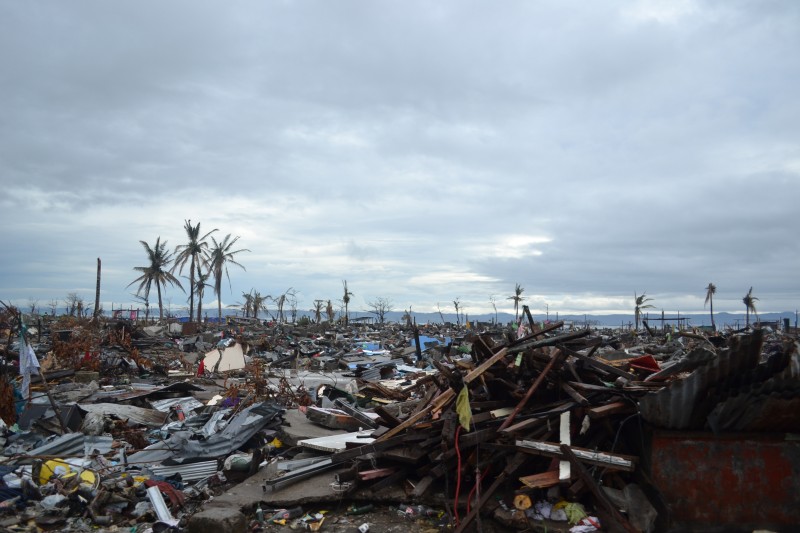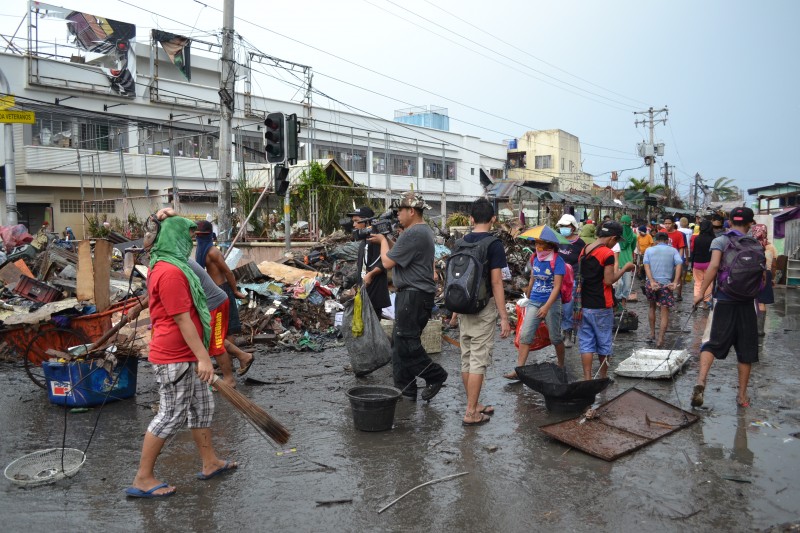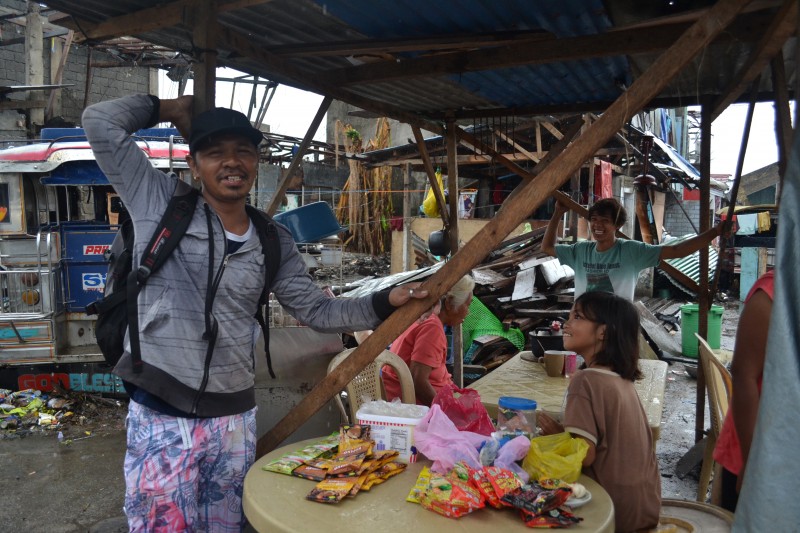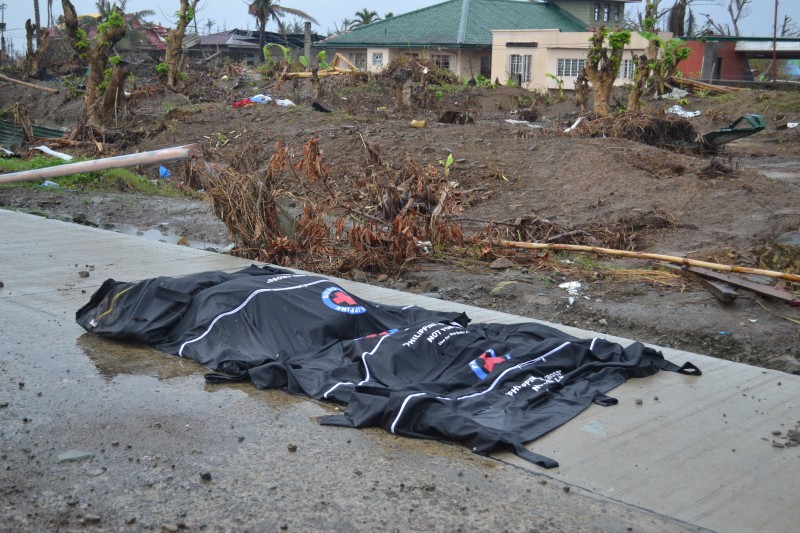Day 5: War zone
In Tacloban City, we stayed with a group of Philippine Daily Inquirer correspondents and photographers. With the Eastern Visayas correspondents also affected by the typhoon, reporters from Bicol had to be brought in.
They repeatedly described the city, which had been their home for two weeks, in one way: a war zone.

A village near Tacloban Airport is reduced to rubble after it was struck by storm surge. PHOTO BY KRISTINE SABILLO/INQUIRER.net
Many of Tacloban’s coastal communities lay in ruins, as if destroyed by a massive explosion or fire. Some areas were practically transformed into landfills. The destruction was so vast, you could not see where it began and where it ended.
When we got there, authorities were still unearthing 70 dead bodies a day. Sometimes they had to leave the cadavers by the road because the supply of body bags again ran short.
Six body bags and mounds of debris littered one street in the village of San Jose. Residents said they eventually got used to the stench.
READ: Lack of body bags, tools slow down ‘Yolanda’ search
The coastal area of San Jose was among the worst-hit by storm surges. Water reached as high as two-storey buildings, destroying houses made of light material and drowning thousands of people.
Because of the massive amount of debris left by the storm surges, some residents believed survivors could have been trapped underneath. However, many of the large piles of debris were removed only weeks later.
That morning, the team found hundreds of people, carrying trash and pulling pails, along the black and muddy streets of Tacloban. We learned that they were part of a cash-for-work program of the Tzu Chi Foundation. In one area, smiling young women passed pieces of wood toward a stack of debris that would in turn be transferred to a dump truck.
It was uplifting to see the people smiling and busy, energized by the promise of useful work at P500 per day.
Through the program, the residents were not only encouraged to clean their surroundings but also help the government retrieve bodies buried beneath toppled houses.
READ: Residents come out in droves to clean up Tacloban

Residents come out in droves to clean the streets of Tacloban as part of the cash-for-work program. PHOTO BY KRISTINE SABILLO/INQUIRER.net
Tacloban was a treasure trove of stories. It was no surprise that reporters wanted to stay despite the lack of facilities. One could easily scour the streets for heartbreaking stories and inspirational survivors.
But two weeks after Yolanda, people just wanted to move on. The people of Tacloban were looking for things to be happy about, to look forward to.
At the airport, people were lining up, ready to leave the past behind and start a new life elsewhere.
Meanwhile, in the heart of the city, residents were opening up their makeshift shops, selling lechon (roasted pig), cigarettes and toiletries.
Lechon may be the last thing you would think of in a place like Tacloban, but with bodies still floating at sea, buying fish was out of the question.
Some of the men we talked to admitted to looting the items they were selling from factories or stores across the city. Others bought noodles at exorbitant prices from Catbalogan.
Many of Tacloban’s residents are fishermen. With the destruction of their boats and their fear of confronting the horrors at sea, retail was their next best option.
What was notable though was the fact that many of the people we talked to were smiling. They had bittersweet smiles as they recalled the loved ones they lost and shared their pride at finding something to be busy about – be it cleaning the streets from debris or putting up a small store.
“Tuloy ang buhay (Life goes on)!” a passerby happily shouted as we took footage of a man chopping lechon.

Jeffrey Escobar, a former fisherman, sells noodles at P20 per pack after typhoon “Yolanda” struck. Photo by Kristine Sabillo/INQUIRER.net
Just a day before the fight of boxing icon Manny Pacquiao, residents posted a hand-made banner along the main street, which read: “We will win this fight. Laban Tacloban (Fight Tacloban)!”
The next day, back on the road, we followed the fight on the radio.
“A unanimous decision in favor of Pacquiao!” the radio announcer shouted. We cheered, and imagined we were part of the crowd in Tacloban, celebrating victory over adversity.
READ: Life goes on in Tacloban















